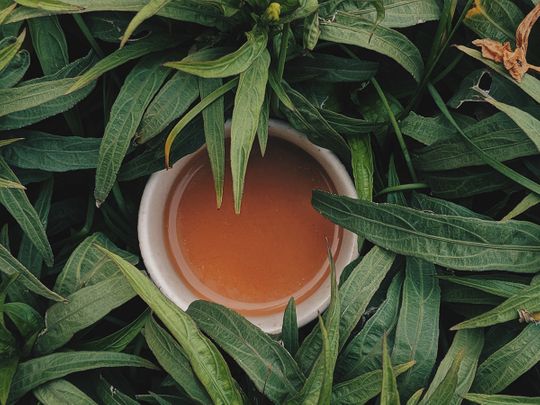
Tea – arguably every kitchen pantry around the world has it. But some of the most expensive and best tea in the world comes from ancient trees in a tiny village called Laobanzhang, in the heart of China.
Click start to play today’s Spell It, and create the word ‘China’ with the letters provided.
Tea is the second-most consumed beverage in the world, according to an April 2014 report in the National Geographic. Data from the United Nations Food and Agriculture Organisation finds that the world drinks about six billion cups of tea a day.
Ever since it was discovered by Chinese emperor Shen Nung in 2737 BC, when some tea leaves accidentally blew into his pot of hot water, tea has become a staple around the world. Over 4,700 years later, you can find it growing in India, Sri Lanka, Japan, Kenya and all around the world.
In China, in particular, tea plays a central role, not just in social settings but as part of the culture’s three schools of philosophy. Chinese philosopher Confucius believed tea could help people understand each other’s character and nature. Buddhists categorise tea as one of the four essential ways to get one’s mind to concentrate and focus – the other three being walking, feeding fish and sitting quietly. And Taoists say tea is a vital ingredient in the elixir of immortality, which puts people in harmony with Nature.
There’s no doubt, for the Chinese, tea is an integral part of daily life, across all levels of society.
One type of tea that’s unique to the country is Pu’erh tea, which is beloved for its musky, strong flavour and its ‘returning taste’ – a sensation of refreshing mint that rises from the back of the throat and fills the mouth as you sip the tea.
According to a March 2019 report in National Geographic, tea from villages like Laobanzhang, which produces Pu’erh, can cost up to $8,000 (Dh29,384) per kilo.
One of the reasons for this seemingly exorbitant price is because Pu’erh doesn’t come from tea shrubs that grow on plantations. Instead, it originates from ancient tea trees that grow wild in China’s Xishuangbanna Prefecture. Some of these resilient trees are more than a thousand years old, while others are well into their hundreds. Since no one waters or fertilises these trees, the taste of the leaves from each tea is entirely new and different.
Pu’erh can also be brewed multiple times, with the flavour changing with each infusion. And its value rises over time; some collectors save Pu’erh leaves for decades, and the aged tea sells for over $10,000 (Dh36,731) for a few grams.
With such extraordinary tea at hand, it’s no surprise the beverage is a prized, beloved part of Chinese culture and tradition.
Do you like drinking tea? Play today’s Spell It and tell us at games@gulfnews.com.



